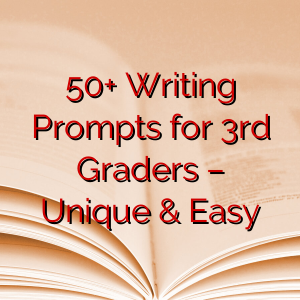Writing a Fun and Creative Myself Essay for Kids
As children grow up, they begin to develop their identities and sense of self. Writing a “myself essay” can be a great way for kids to explore who they are and express their thoughts and feelings. However, it can also be challenging for them to put their thoughts into words. In this article, we’ll explore how to write a fun and creative myself essay for kids.
How
To Write An Essay About Myself For Kids And Children
1. Introduction
Writing an essay about oneself can be daunting, especially for children who may not have a lot of experience with writing. However, it can also be a fun and creative process that allows kids to explore their thoughts and emotions. In this article, we’ll provide tips and strategies for writing a fun and creative myself essay for kids.
2. Understanding the purpose of a myself essay
Before starting to write, it’s important to understand the purpose of a myself essay. A myself essay is a piece of writing that allows the writer to express their thoughts, feelings, and experiences about themselves. It can be an opportunity for kids to reflect on their personal growth, accomplishments, challenges, and goals.
3. Brainstorming ideas for a myself essay
The first step in writing a myself essay is brainstorming ideas. Encourage your child to think about their interests, hobbies, strengths, and weaknesses. They can also reflect on their personal experiences, such as their family, friends, school, and community.
Here are some questions that can help them generate ideas:
- What are some of my favorite activities?
- What are my strengths and weaknesses?
- What challenges have I overcome?
- What are my goals for the future?
- What are some important people in my life?
4. Outlining your essay
Once your child has brainstormed some ideas, it’s time to create an outline for their essay. An outline can help them organize their thoughts and ensure that their essay has a clear structure.
Here’s an example of an outline for a myself essay:
- Introduction: Introduce yourself and explain the purpose of the essay
- Background Information: Provide some basic information about yourself, such as your name, age, and where you live
- Interests and Hobbies: Discuss your favorite activities and hobbies
- Strengths and Weaknesses: Reflect on your personal strengths and weaknesses
- Challenges and Achievements: Discuss any challenges you have overcome and your proudest achievements
- Goals and Aspirations: Talk about your goals for the future and what you hope to achieve
- Conclusion: Sum up your essay and reiterate the importance of self-reflection
5. Writing your introduction
The introduction is an important part of your essay, as it sets the tone for the rest of your writing. Encourage your child to start their introduction with a strong opening sentence that grabs the reader’s attention.
Here’s an example of an introduction for a myself essay:
“Hi, my name is Sarah, and I’m excited to tell you about myself! I’m a 10-year-old girl who loves to read, play soccer, and spend time with my family and friends. In this essay, I’m going to tell you about my interests, strengths, challenges, and goals.”
6. Developing your body paragraphs
The body paragraphs are where your child can delve deeper into their ideas and experiences. Encourage them to use specific examples and anecdotes to illustrate their points.
1. Interests and Hobbies
In this section, your child can talk about the activities they enjoy and why they find them interesting. They can also discuss any hobbies they have and how they developed those interests.
Example: “I love reading because it takes me on adventures to far-off places without leaving my room. I also enjoy playing soccer because it’s a fun way to exercise and work together with my teammates. I’ve been playing soccer since I was six years old, and I love the feeling of scoring a goal.”
2. Strengths and Weaknesses
Here, your child can reflect on their personal strengths and weaknesses. They can talk about how these qualities have helped them in their life and what they are working on improving.
Example: “One of my strengths is that I’m a good listener. I like to hear other people’s stories and help them when they need someone to talk to. One of my weaknesses is that I sometimes struggle with math. But I’m working on it by practicing and asking my teacher for help when I need it.”
3. Challenges and Achievements
In this section, your child can discuss any challenges they have faced and how they overcame them. They can also talk about their proudest achievements and how they felt when they accomplished them.
Example: “One of the biggest challenges I’ve faced was moving to a new school in the middle of the year. I didn’t know anyone, and it was hard to adjust to a new environment. But I made new friends and learned that I’m resilient. My proudest achievement was when I won the first-place trophy in a writing competition. I worked really hard on my story, and it felt amazing to be recognized for my efforts.”
4. Goals and Aspirations
Here, your child can talk about their goals for the future and what they hope to achieve. They can also discuss any aspirations they have and how they plan to work towards them.
Example: “My goal for the future is to become a published author. I love writing stories, and I hope to share them with others someday. I also want to travel the world and see new places. I plan to work hard in school and keep practicing my writing skills.”
7. Writing your conclusion
The conclusion is where your child can sum up their essay and reiterate the importance of self-reflection. Encourage them to end their essay with a memorable sentence that leaves a lasting impression on the reader.
Example: “Writing this essay has helped me learn more about myself and what I want to achieve in life. I hope that by reading my story, you’ve learned a little bit about me too. Remember to take time to reflect on your own experiences, and you might be surprised by what you discover about yourself.”
8. Editing and revising your essay
Once your child has finished writing their essay, it’s important to edit and revise it for grammar, spelling, and punctuation errors. Encourage them to read their essay out loud to catch any awkward sentences or confusing phrases.
Example Essay About Myself For Kids
Hi, my name is Sarah, and I’m excited to tell you all about myself! I’m a happy and curious girl who loves to explore new things and meet new people. In this essay, I’ll be sharing some fun facts about me, my family, my hobbies, and my dreams for the future.
My Family
I have a big and loving family that always supports and encourages me. My mom is a teacher, and my dad is a doctor. I have a younger brother named Jack, who is my best friend and partner in crime. We love to play together, read books, and watch movies.
My Hobbies
In my free time, I enjoy many different hobbies that keep me busy and entertained. I love to read books, especially adventure and fantasy stories. I also like to draw and paint, and I’m always looking for new creative projects to work on. I’m a big fan of music, and I like to sing and dance whenever I get the chance.
My Dreams for the Future
When I grow up, I want to be a writer and an explorer. I want to travel around the world, visit new places, and learn about different cultures and traditions. I also want to write books and stories that inspire and entertain people of all ages. I believe that everyone has a story to tell, and I want to help them share it with the world.
Conclusion
In conclusion, I hope you enjoyed reading this essay on myself, and that you learned a little bit more about who I am and what I love to do. Writing about oneself can be challenging, but it’s also a lot of fun and a great way to express oneself. If you’re ever asked to write an essay on yourself, remember to be honest, creative, and confident. You have a unique perspective and a voice that deserves to be heard!

Hello! Welcome to my Blog StudyParagraphs.co. My name is Angelina. I am a college professor. I love reading writing for kids students. This blog is full with valuable knowledge for all class students. Thank you for reading my articles.




